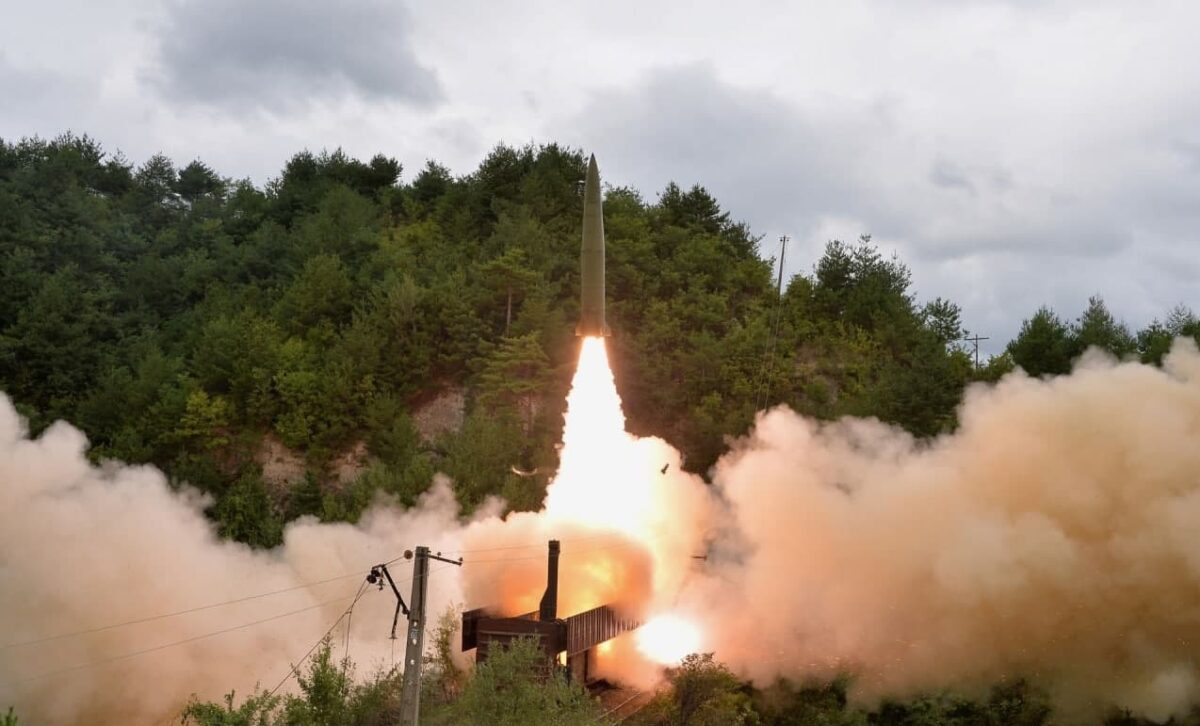Riviere said there was consensus among the group to condemn the test, which North Korea announced was launched using a “railway-borne missile system”.
“Everyone is very concerned about this situation,” de Riviere told several journalists after the 45-minute meeting.
“This is a major threat to peace and security, it’s a clear violation of the Council’s resolutions,” he continued, adding, that the missiles had fallen “within Japan’s exclusive economic zone.”
Pyongyang earlier confirmed that it launched the test on the same day Seoul became the first non-nuclear country to test a submarine-launched ballistic missile (SLBM).
The missiles fired by North Korea were a test of a new “railway-borne missile system” designed as a potential counterstrike to any forces that threaten the country, the state-run Korean Central News Agency (KCNA) reported on Thursday.
The missiles flew 800km (497 miles) before striking a target in the sea off North Korea’s east coast on Wednesday, KCNA reported.
On Wednesday, South Korean and Japanese authorities noted they had detected the launch of two ballistic missiles from North Korea, just days after it tested a long-range cruise missile that analysts said could have nuclear capabilities.
The two Koreas have been in an increasingly heated arms race, with both sides unveiling more capable missiles and other weapons.
In a statement from London, the British Foreign Office condemned the test as a “clear violation” of Security Council resolutions and a “threat to regional peace and security”, as the United States has also done.
“We urge North Korea to refrain from further provocations, and to return to dialogue with the US,” the British statement reads.
North Korea has been steadily developing its weapons systems, raising the stakes for stalled talks aimed at dismantling its nuclear and ballistic missile arsenals in return for US sanctions relief.
“The railway-borne missile system serves as an efficient counterstrike means capable of dealing a harsh multi-concurrent blow to the threat-posing forces,” said Pak Jong Chon, a North Korean marshal and member of the Presidium of the Politburo of the ruling Workers’ Party of Korea, who oversaw the test, according to KCNA.
“(Pak) said that the deployment of the railway-borne missile system for action in accordance with the line and policies on modernising the army set forth at the eighth Congress of our Party holds very great significance in increasing the war deterrence of the country,” the KCNA added.
North Korean leader Kim Jong-un did not oversee the test-firing, the report noted.
Photos released by state media showed an olive-green missile rising on a column of smoke and flame from the roof of a train parked on tracks in a mountainous area.
South Korea had reported the missiles were fired from the central inland area of Yangdok.
“Rail mobile missiles are a relatively cheap and reliable option for countries seeking to improve the survivability of their nuclear forces,” Adam Mount, a senior fellow at the Federation of American Scientists, said on Twitter, adding, “Russia did it. The US considered it. It makes a ton of sense for North Korea.”
Mount and other analysts stated the system is likely to be constrained by North Korea’s relatively limited and sometimes unreliable rail network, but that it could add another layer of complexity for a foreign military seeking to track and destroy the missiles before they are fired.
According to KCNA, Pak noted there are plans to expand the railway-borne missile regiment to a brigade-size force in the near future and to conduct training to gain “operational experience for actual war”.
The army should prepare tactical plans for deploying the system in different parts of the country, Pak said.
It is unusual to see the sheer variety in missile delivery systems and launch platforms that North Korea develops, said Ankit Panda, a senior fellow at the US-based Carnegie Endowment for International Peace.
“It’s not very cost effective (especially for a sharply resource-constrained state) and far more operationally complex than a leaner, vertically integrated force,” he added on Twitter.
The railway-system test displayed on Wednesday could possibly set the stage for developing one capable of launching a larger, nuclear-armed intercontinental ballistic missile (ICBM), Panda added.
He also noted that some of the missile systems displayed by North Korea may be about “technology demonstration”, which may not be fully deployed.
Source: Al-Jazeera
